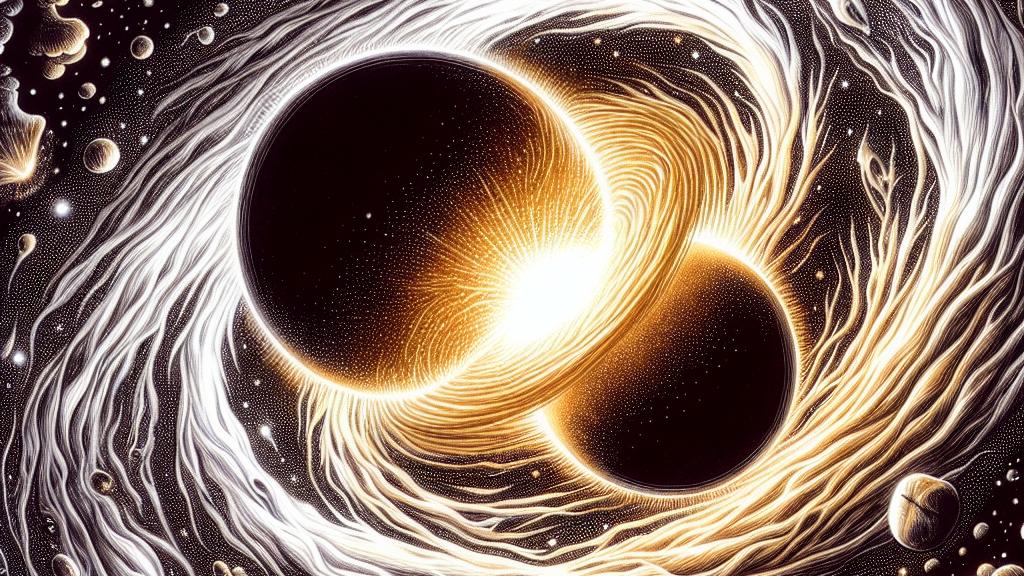Detecting Binary Black Holes in Galactic Centers
Overview
- Binary black holes are pairs of supermassive black holes orbiting each other, essential for understanding cosmic dynamics.
- Their detection illuminates the evolution of galaxies and the forces at play within the universe.
- Advanced observational methods and unique signals from active galactic nuclei help astronomers infer their existence.

The Cosmic Mystery of Binary Black Holes
Consider the captivating idea that every galaxy contains a supermassive black hole at its core—akin to a glowing yolk nestled inside an egg. Now, some galaxies, like the fascinating case of NGC 6240, host not just one but two of these cosmic heavyweights, leading to the creation of binary black holes. This remarkable phenomenon often arises from the collision of galaxies, a spectacular event that can result in their gravitational companionship. Just like how friends can orbit around each other in a dance, these black holes engage in a gravitational ballet that intrigues astrophysicists. Understanding how frequently these binary systems emerge can shed light on the evolutionary pathways of galaxies and the complex nature of gravitation in the universe.
Challenges in Detection
But if binary black holes are out there, why don’t we just point a telescope and see them? The challenge lies in the very nature of black holes—they are, by definition, regions from which not even light can escape. Rather than directly observing them, we must rely on gravitational waves, those tiny ripples in spacetime caused by their mergers. The Laser Interferometer Gravitational-Wave Observatory (LIGO) has remarkably expanded our understanding, famously detecting the merger of two stellar-mass black holes in the groundbreaking event GW150914. However, for supermassive black hole binaries, we turn to indirect methods—such as examining the luminosity patterns of active galactic nuclei. These nuclei emit astounding amounts of energy, often appearing as some of the brightest objects in the universe, suggesting the gravitational pull of a hidden partner (or partners) lurking in the shadows.
The Significance of Finding Pairs
You may wonder, what’s the big deal about discovering these elusive pairs? The answer is profound. Every merger of binary black holes generates colossal amounts of energy, a firework of gravitational waves that can now be captured and analyzed. For example, the incredible data from LIGO isn’t just a scientific breakthrough; it’s a gateway to understanding the cosmos on a grander scale. Each detected event deepens our comprehension of how galaxies form and evolve, revealing the intricacies of gravitational dynamics that shape our universe. Finding more of these binary black holes is crucial—it provides clues not just about their existence, but also about the nature of dark matter and dark energy, and how they influence the cosmic landscape. It's like piecing together a complex puzzle, unveiling deeper truths about our universe's past, present, and future.

Loading...